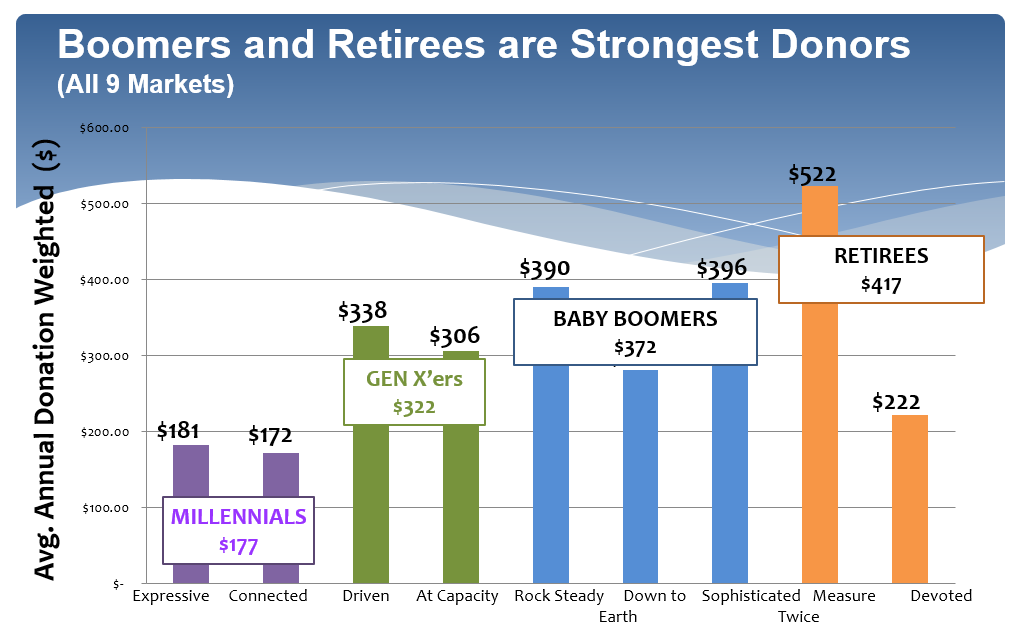Remember the movie “Working Girl”? I’m remembering the scene where Melanie Griffith’s character Tess tells Trask her train of thought that led to putting two very different companies together.
TESS: See this -- this is from the Wall Street Journal, just your basic article about how you were trying to expand into broadcasting, right...okay, now the same day I'll never forget I'm reading Page six of the Post. There's this item about Bobby Stein the radio talk show guy hosting a charity auction that night, real bluebloods and won't that be funny -- now I turn the page to Suzy who does the society stuff...and there's this picture of your daughter, see? Nice picture. And she's one of the organizers of the same charity ball and I start thinking Trask, radio, Trask, radio. I was, you know, aware of the Japanese giving you a pain in the...anyway, that was a Friday, which is the day we get the Brown Report -- me and some of the other secretaries chipped in for a subscription together. Sometimes we play the NASDAQ stocks and his best buys that week see here -- Metro Radio Network, ripe for the picking. So I sent for the annual reports of both the companies and started matching up numbers and aims and all and...that's it.
A classic David vs. Goliath movie trope, and illustrates how creative solutions come from diverse linking.
This article details my own train of thought on my epiphany of tech in marketing. Or marketing in tech. If you run a consumer-focused business or a nonprofit, marketing is THE WAY you make your stakeholder/consumers aware of you and want to either purchase your goods or support your mission.
B.C. 2 (Before Consulting, Part Deux), I worked for a local outpost of a philanthropic organization with over 1,700 offices in the U.S. Our outpost was very much like all regular offices, where technology was used but not really embraced as a game-changer. The early years of my tenure involved addressing deferred maintenance of assets and positioning technology to match current trends and threats — cleaning up, enhancing security, reducing complexity, streamlining processes, and reducing costs. Typical IT stuff, getting things ready for meaningful change.
The donor management/development software was in use by approx. 400 of the biggest offices. Like so many legacy systems, it had very old roots: originally it ran on AS/400s and over time migrated to newer hardware — it was implemented now so that each office had its own SQL database. Whether you were Old School and it lived on-premises or it lived in the Cloud, it was what it was.
The migration term “Lift and Shift” is a common way to move one’s existing system to a new home. Many of our fellows embraced this approach — in fact, one of the large nationwide IT support organizations made this their entire business. They’d Lift and Shift one’s old local SQL server instance to a cloud repository, and local users would connect to that, or via a remote PC instance in the cloud. Their licenses would be held in virtualized boxes in Kentucky. No doubt this served their clients very well during the Pandemic. A couple of other similar support organizations eventually went this way — one even got bought by the new owner of the donor management software, in order to offer their corporate shareholders multiple revenue streams.
Our own tech-driven marketing efforts evolved over this period from “traditional” email newsletter blasts to social media approaches once those became viable. It was “okay” for reaching out to our base — not perfect in that we’d regularly have TONS of undeliverable emails bounce back as people move from jobs to jobs. Social media metrics were better but not as good for the long-form information we had to relay.
Somewhere around 2016, I attended one of our large nationwide conferences, and a session I attended was led by peers from Boston, the home of Schick and Gillette. They had board members from these marketing-driven firms, and when surveying generational trends of average giving, someone said: “Hey…those graphs look very similar to our graphs of razor-blade adoption.”
Sidebar: when I went to college, almost the first thing handed to me when I got my dorm room key was a “Good Stuff” box, which contained a razor blade, travel shaving cream, etc. This was a well-orchestrated (and well-funded) marketing push by Gillette to make us young impressionables buy their blades from that day onward. It worked. It even worked on my Dad who put aside the safety razor and started buying them too.
The point here is that Gillette sought to win the hearts and minds of the next generation of razor blade consumers, which would benefit them for YEARS of continued sales.
This particular presentation was focused on donor segmentation using the Mindbase segmentation model, which bundled data from 9 markets (Boston, Cincinnati, Cleveland, Columbus, Dallas, Los Angeles, Louisville, Phoenix and San Francisco — over 658,000 donors). You can see below the upward trajectory of annual giving.

…which our colleague in Boston said matched the trend line of razor blade acceptance. You start off with the basics and work your way up to better quality equipment that costs a bit more. New donors (customers) start off giving perhaps because it’s a part of organizational culture at their new job…everyone does it. As one’s salary increases, one’s giving goes up in lockstep.
Excited by the prospect, I looked into whether we, in little old Tulsa, would be able to access the same sort of data. After all, we had DECADES of data on our donors at our fingertips! Imagine: being able to finally answer the questions about who our donors were, and more important, how to get people “on the escalator.” While our local leadership team could not be swayed in favor of changing systems, I dreamed up ways in which to graft these new capabilities onto our up-and-coming Data Analysis & Visualization Engine; route around the bottleneck of our existing SQL database. I wrote an earlier post that included survey results from Fidelity’s Charitable Donor Advised Fund that examines the question of how to create donors. As always, the long-term task is not only how to get people involved and giving, but how to keep track of them over their work-life so they can REMAIN givers of their time, talent, and funds. From these and subsequent presentations, I could see where national leadership was really focusing on this as a growth area.
But upon contacting Mindbase (formerly Yankelovitch & Partners), we learned that we had not been capturing the key fields by which segment membership could be inferred — there were several, but the biggie was personal cell phone numbers, which marketers use for demographics and localization. We indeed had tons of data on our donor companies, but very little of the key fields that would let us segment and identify the motivations of the actual people who were doing the giving. Mindbase is a database of over 260,000,000 people — two-thirds of our nation — and we were unable to identify our donors sufficiently to harness that power. Going back to our email newsletter blasts above, we had a sufficiently high number of undeliverables because people move…they change jobs, and we lose them. This leads to CHURN: the sales term for what percentage of your customers you have to replace this year because you lost that number last year.
If you’ve watched any streaming TV lately, you’ve seen market segmentation at work. The shows you watch build a demographic fingerprint that determines which products are advertised to you. The same thing applies to all messaging platforms — we’ve all had the experience of searching for something online, only to find ads for that thing popping up in your Facebook feed. We witness it all the time from the so-called FANG Companies: Facebook, Amazon, Netflix, and Google, where their ability to design and deliver pinpoint-targeted messages is key to their profitability.
We learned that without the ability to target messages to particular populations and segments, we were actually not doing marketing. We were doing public relations. Writing to a mass audience has merit and value, but is a different thing, practiced by different professionals.
This brings up another point: when you are part of a national organization but every office is locally owned and controlled, everyone does things differently. National leadership can proselytize and evangelize, but they remain only recommendations. We did things in certain ways, and our colleagues in other markets did also. Our communications department for example was largely PR for the President/CEO, Annual Reports, and press releases that morphed into e-newsletters. I know because my spouse held that leadership role back in the dark ages (three CEOs ago). The title changed to Marketing, but the role hasn’t kept pace.
Enter: a Grand Unified Field Theory from national leadership. A new modern system, built in the cloud, where everyone (at least the big 400 anyway) can migrate their data, use unified rules and algorithms, and as donors move from market to market, they won’t be lost to churn. Even if they retire, enough key field data remains to reach out and keep them in the family. Unified messaging and touchpoints keep them where they were in the sales funnel. Social media analysts at national HQ craft and perform A/B testing on messages, and once again, local marketing becomes less relevant. Perhaps the costs are shifted to pay for the outsourced social media analysts at national HQ.
This also shifts the organization’s tech needs away from traditional IT to business or database analysts, sometimes even embedded within the departments. In the past few years, more and more of my talented peers have exited, in places like Buffalo, San Francisco, or Portland. A different thing, practiced by different professionals.
“When elephants dance, it’s the grass that suffers.” — African proverb
This is why I think that in such situations, Marketing and IT should be working together more, as we should both realize we work for the same end goal, and we can benefit the organization by pulling together to build better ways to reach and retain customers. In our little outpost, Marketing has long been a variable-cost center tied to Resource Development. Now, IT will be too as capitalized assets become less a thing on our balance sheets.
In the last two decades, there’s also been a trend toward statewide mergers — the largest local offices would absorb their smaller suburban neighbors. This actually made sense when it matched the geographic footprint of the local TV stations and newspapers. The message is cleaner and has less confusion for the consumer. Now that local media has less clout, the next logical step is in the other direction: toward pinpoint market segmentation of the individual as their affiliation changes over their work-life from one local office to another. The local brand becomes less important. The national brand becomes THE brand.
It will be interesting to watch as this one subset of the philanthropic industry slowly merges into one entity — maybe it will adopt the “Chapter model” employed by the American Red Cross, where there’s no local autonomy whatsoever.
It would have been nice to have learned this earlier.
But that is the path of an IT Director to a CIO. You move past being a caretaker of assets to a change agent. You no longer put your own finger in the leaky dike, but look at the business ecosystem overall for ways to solve the problem of too much water in the wrong place. By viewing the entire enterprise, the CIO can add value. Tech is just a tool for improving the process flow of information, which in a service economy like ours IS the product.
